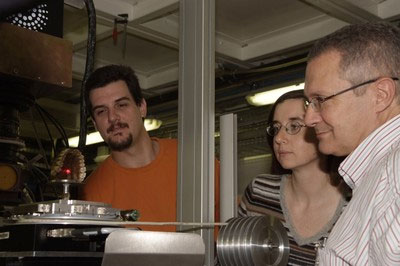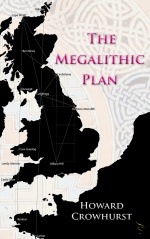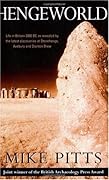<< Other Photo Pages >> Qesem Cave - Cave or Rock Shelter in Israel
Submitted by davidmorgan on Friday, 11 November 2011 Page Views: 7133
Natural PlacesSite Name: Qesem CaveCountry: Israel
NOTE: This site is 0.538 km away from the location you searched for.
Type: Cave or Rock Shelter
Nearest Town: Tel Aviv
Latitude: 32.109943N Longitude: 34.980007E
Condition:
| 5 | Perfect |
| 4 | Almost Perfect |
| 3 | Reasonable but with some damage |
| 2 | Ruined but still recognisable as an ancient site |
| 1 | Pretty much destroyed, possibly visible as crop marks |
| 0 | No data. |
| -1 | Completely destroyed |
| 5 | Superb |
| 4 | Good |
| 3 | Ordinary |
| 2 | Not Good |
| 1 | Awful |
| 0 | No data. |
| 5 | Can be driven to, probably with disabled access |
| 4 | Short walk on a footpath |
| 3 | Requiring a bit more of a walk |
| 2 | A long walk |
| 1 | In the middle of nowhere, a nightmare to find |
| 0 | No data. |
| 5 | co-ordinates taken by GPS or official recorded co-ordinates |
| 4 | co-ordinates scaled from a detailed map |
| 3 | co-ordinates scaled from a bad map |
| 2 | co-ordinates of the nearest village |
| 1 | co-ordinates of the nearest town |
| 0 | no data |
Internal Links:
External Links:

Note: Scientists from Max Planck Institute digitize bones from Qesem Cave, curated at Tel Aviv University. See comment.
You may be viewing yesterday's version of this page. To see the most up to date information please register for a free account.
Do not use the above information on other web sites or publications without permission of the contributor.
Nearby Images from Flickr






The above images may not be of the site on this page, but were taken nearby. They are loaded from Flickr so please click on them for image credits.
Click here to see more info for this site
Nearby sites
Click here to view sites on an interactive map of the areaKey: Red: member's photo, Blue: 3rd party photo, Yellow: other image, Green: no photo - please go there and take one, Grey: site destroyed
Download sites to:
KML (Google Earth)
GPX (GPS waypoints)
CSV (Garmin/Navman)
CSV (Excel)
To unlock full downloads you need to sign up as a Contributory Member. Otherwise downloads are limited to 50 sites.
Turn off the page maps and other distractions
Nearby sites listing. In the following links * = Image available
1.4km SSE 152° Ancient Farm near Rosh Ha'ayin * Ancient Village or Settlement
4.7km W 263° Antipatris* Ancient Village or Settlement
5.7km NNW 333° The Gilgal associated violently with Joshua Stone Circle
13.0km SSW 193° Mosaic and Stone structure near Shoham Ancient Village or Settlement
17.5km W 267° Tel Qasile* Artificial Mound
18.6km SSW 203° Lod Mosaic Ancient Palace
18.9km WNW 300° Apollonia (Israel)* Ancient Village or Settlement
19.1km W 268° Tel Qudadi Ancient Village or Settlement
24.4km ESE 112° The Gilgal associated with Elijah and Elisha Stone Circle
28.5km SSW 192° Tel Gezer* Ancient Village or Settlement
29.7km ESE 101° Tel Shiloh Ancient Village or Settlement
30.2km S 178° Emmaus Ancient Village or Settlement
30.2km ENE 68° Jacob's Well (Bir Ya'Qub)* Holy Well or Sacred Spring
31.3km ENE 63° Mount 'Ebal Ancient Temple
34.1km SW 233° Yavne Yam Ancient Village or Settlement
38.1km SSE 156° Motza Neolithic City* Ancient Village or Settlement
38.9km SSW 198° Tel 'Ekron Ancient Village or Settlement
39.8km SSE 153° Tel Motza* Ancient Village or Settlement
40.7km S 178° Tel Beth-Shemesh* Artificial Mound
41.5km N 5° Tel Esur Ancient Village or Settlement
41.6km SE 144° Shuafat road Chalcolithic period site* Ancient Village or Settlement
43.4km NNE 16° El-ahwat near kibuts Katsir-Harish* Ancient Village or Settlement
43.5km SE 146° 2000 year old stone fragment in Jerusalem* Marker Stone
44.1km SSE 147° Temple Mount* Ancient Temple
44.5km SSE 147° City of David* Ancient Village or Settlement
View more nearby sites and additional images






 We would like to know more about this location. Please feel free to add a brief description and any relevant information in your own language.
We would like to know more about this location. Please feel free to add a brief description and any relevant information in your own language. Wir möchten mehr über diese Stätte erfahren. Bitte zögern Sie nicht, eine kurze Beschreibung und relevante Informationen in Deutsch hinzuzufügen.
Wir möchten mehr über diese Stätte erfahren. Bitte zögern Sie nicht, eine kurze Beschreibung und relevante Informationen in Deutsch hinzuzufügen. Nous aimerions en savoir encore un peu sur les lieux. S'il vous plaît n'hesitez pas à ajouter une courte description et tous les renseignements pertinents dans votre propre langue.
Nous aimerions en savoir encore un peu sur les lieux. S'il vous plaît n'hesitez pas à ajouter une courte description et tous les renseignements pertinents dans votre propre langue. Quisieramos informarnos un poco más de las lugares. No dude en añadir una breve descripción y otros datos relevantes en su propio idioma.
Quisieramos informarnos un poco más de las lugares. No dude en añadir una breve descripción y otros datos relevantes en su propio idioma.